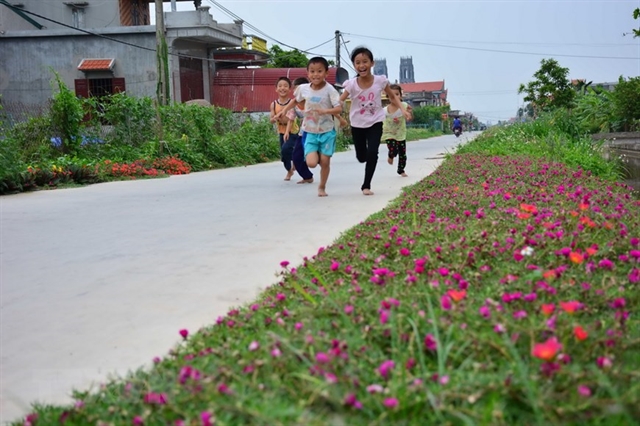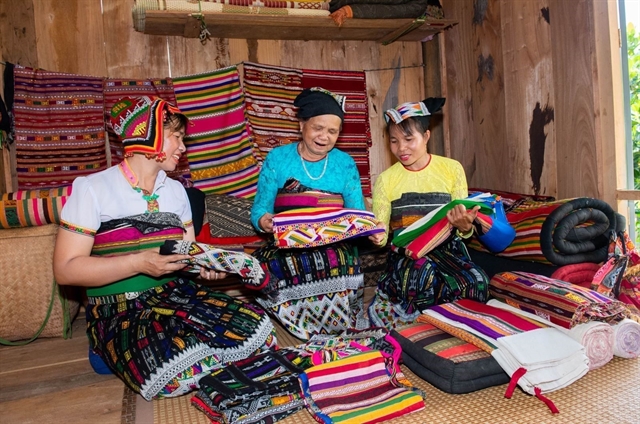 Politics & Law
Politics & Law


|
| Children in Hải Đông Commune, Hải Hậu District in the northern province of Nam Định run on the road that was built as part of the local infrastructure improvement under new-style rural area building programme. — VNA/VNS Photo Công Luật |
HÀ NỘI — Developing new-style rural areas in Việt Nam has left positive changes to the face and development of the country’s rural areas and incomes of rural people, Deputy Prime Minister Trịnh Đình Dũng said on Thursday.
Dũng, also head of the National Steering Committee for the National Target Programme on New-Style Rural Area Building, said more resources were being invested in agriculture and rural areas.
The incomes of people living in rural areas had improved but the income gap was still large, showing both positive and negative sides, he said.
“Changes have been made to create new motivations for development but negatively speaking, the changes’ impacts have not spread as widely as expected,” he said, adding that everyone was expected to benefit from the changes.
“Developing new-style rural areas is not solely to open a new road or build a new public work. Its main goals are to improve life quality and increase incomes for farmers,” Dũng said.
He said that although rural areas were trying to meet criteria that make them new-style rural areas, some had not paid proper attention to developing industrial production and promoting their traditional trade or tourism potential.
“Building new-style rural areas must closely link with urbanisation, industrialisation and modernisation,” he said.
“The growth of urbanisation, industries and services helps create jobs, change the labour structure, leading to a decrease in the number of rural workers/farmers. As a result, average farming land per head will be increased, thus people have advantages to develop production and improve their lives.”
“Also, when agricultural production is developed, it will support the development of other industries, services and labour in urban areas,” Dũng said, adding that links among rural and urban areas, among agriculture and industrial production and services, remained unsystematic and lacked supporting policies.
Deputy Minister of Agriculture and Rural Development Trần Thanh Nam said 5,177 communes, accounting for more than 58 per cent of total communes across Việt Nam, have met the standards of 'new-style' rural areas in the last 10 years.
Nine provinces and cities in the country reportedly had all their communes recognised as new-style rural areas.
Among 664 districts in 45 major provinces and cities in the country, 127 districts were titled “new-style rural areas”.
Meanwhile, 45 districts in the remaining 21 provinces/cities do not have any communes qualified as new-style rural areas.
Nam said at least 80 per cent of total communes nationwide were expected to meet standards of new-style rural areas in the next five years.
Now, 19 criteria are used to assess the development and improvement of communes in terms of infrastructure, irrigation, electricity, environment, income, education, healthcare, social security and culture.
Nine criteria are used to assess districts.
Deputy Minister Nam said the criteria would be adjusted to increase decentralisation and increase flexibility when assessing localities’ performance in building new-style rural areas.
The changed criteria were also expected to encourage disadvantaged communes/districts to continue seeking recognition between 2021 and 2025. — VNS




